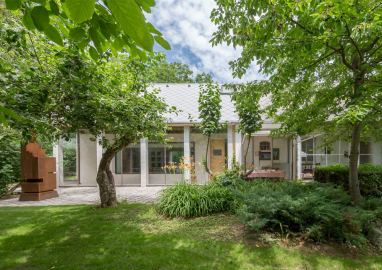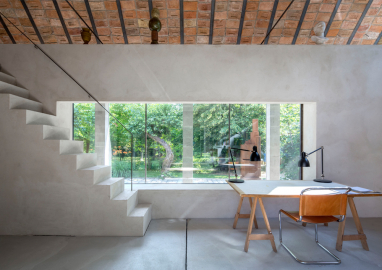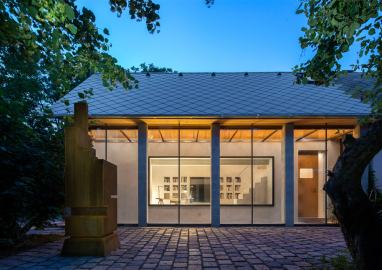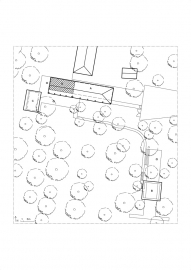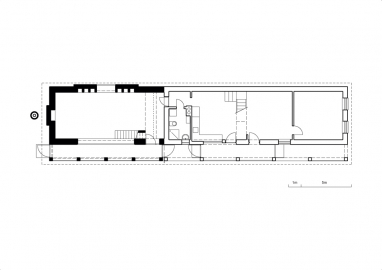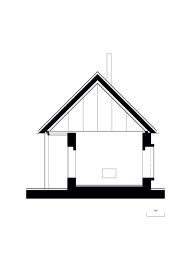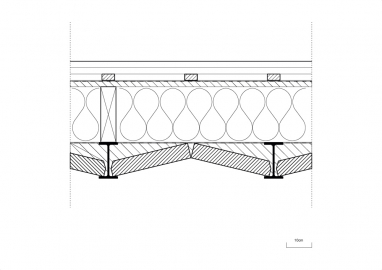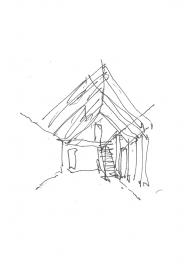House Extension in the Site of the Former Brickyard
The extension is part of a set of buildings on the site of a former village brickyard. It includes a former brickmaster´s house restored 25 years ago, a former brick kiln rebuilt for a studio in 2010 and a shed. This extension is directly added to the existing house. Extension fulfills the need of the living space of growing family for the weekend stays.
The original brickmaster´s house was a typical portico country style with pitched roof. Portico house was actually a wise scheme – as vernacular houses used to be. Portico attached to the longitudinal main volume was a distinctive and practical feature on interface of exterior and interior of the house. Apart from natural protection of this frequented zone it regulates different effects of summer and winter sunshine energy on the mass of the masonry.
Extension is actually a prolongation of the silhouette of the existing house inclusive its portico. It subordinates to the existing cross-figure, but inside it is a radically different space concept. It is an open space scheme without the usual ceiling separating living area from the attic. The new living room of modest floor area is equipped with generous space experience. Empora gallery is inserted in the dividing line of the existing house and its new extension – it serves as a connection to the existing attic.
The site is actually a vast old fruit orchard, which was planted here after the brick production was finished shortly after the WWII. This late addition is a part of the abovementioned set of buildings. The main task apart of creating a new added living space was the new volume being consistent to the existing atmosphere of this very romantic vernacular surrounding. That means to behave respectfully to the existing traditional form of rural architecture and at the same time present certain spatial, formal and material autonomy. It is a particular homage to the culture of a vanished craft of brickmaking.
The roof truss could be interpreted as a scheme of typical rafter construction or as a structural scheme of two mutually supportive sloping slabs. All the bricks used in the roof truss are marked after their origin. More than 2/3 had been manufactured by this former brickyard, the rest originates from the vanished brick kilns of the nearby region. Decorative mosaic like appearance of this roof truss is derived from different shades and ragged surfaces, which are typical for handmade bricks production.
Massive roof truss structure improves substantially the accumulation characteristics of this building. It does radically reduce the thermal fluctuation in the interior. Closable glased portico serves as a buffer clima zone for most of the year.
The walls made of brick blocks are outside and inside plastered with classic lime plaster without top coating. Other materials of this extension are also left without further surface treatment – concrete of the floor and of empora, precast concrete blocks of the portico columns and of the chimney, steel beams and profiles etc. In certain sense it is a finished-unfinished building.


